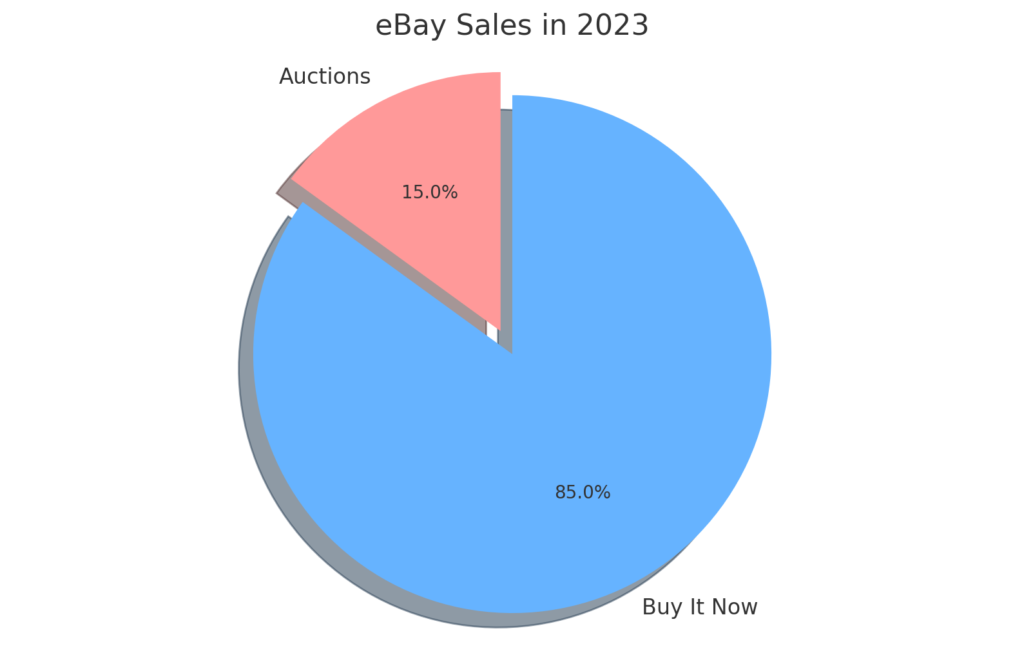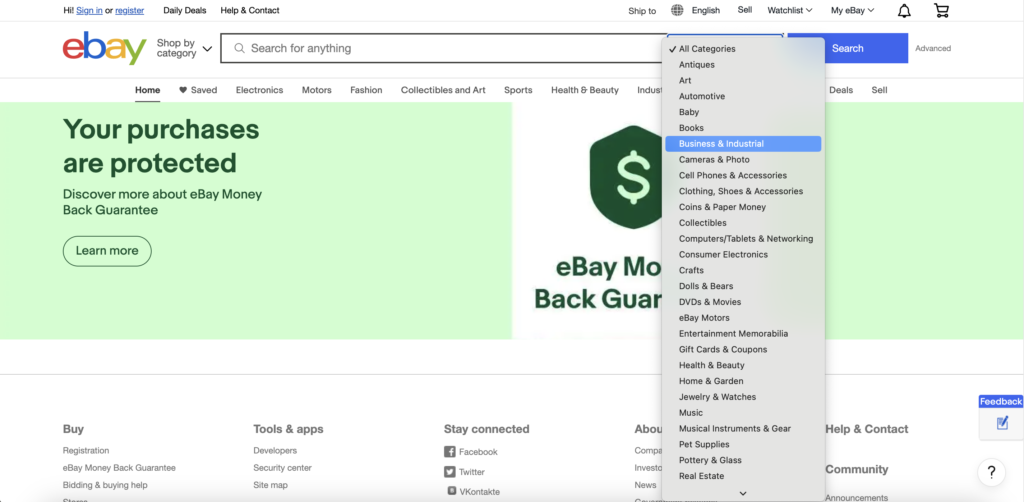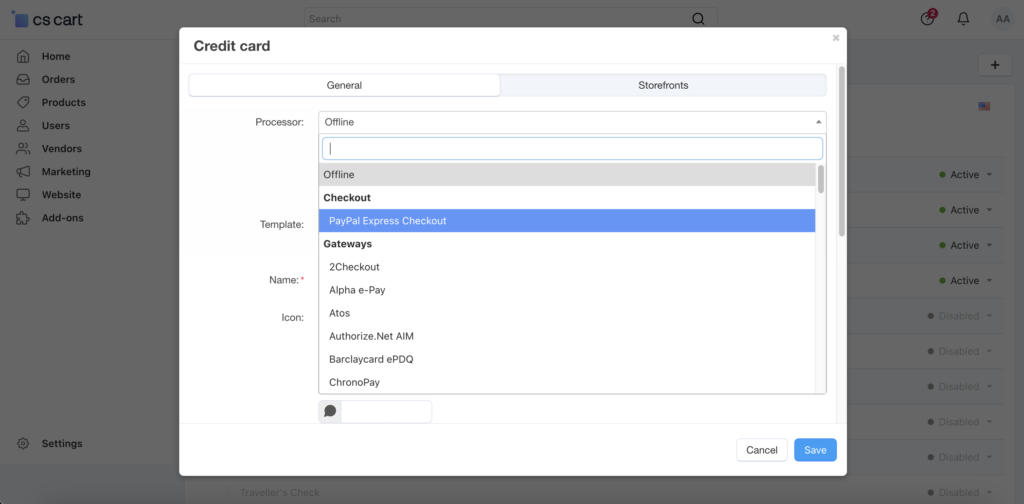How to Create an Online Marketplace Like eBay: Exploring Auction Marketplace Model
Table of Contents
- I. Introduction
- II. Understanding eBay’s Business Model
- III. Key Features of eBay’s Platform
- IV. Legal Considerations and Compliance
- V. Technical Infrastructure for eBay Like Marketplace
- VI. Launching and Growing Techniques
- VII. Why CS-Cart is Perfect for Creating an eBay Like Marketplace
- IX. Conclusion
- FAQ
I. Introduction

“What makes eBay successful.. The real value and the real power at eBay is the community. It’s the buyers and sellers coming together and forming a marketplace.”
Pierre Omidyar, the Founder of eBay
eBay started back in 1995, thanks to Pierre Omidyar. It was one of the very first online marketplaces, making it easy for people everywhere to shop from their homes. eBay was special because it was a multi-vendor marketplace, not just a single-seller online shop unlike many others at that time. This means lots of different sellers could put their stuff up for sale or auction on the platform.
eBay was initially known as an auction website, but you could also buy things at a set price. This mix helped eBay stand out as a classic marketplace website.
In this article, we’ll explore eBay’s business model and learn how to create an online marketplace like eBay.

II. Understanding eBay’s Business Model
Let’s dive into how eBay works and how you can use these ideas for your own online marketplace.
Auction vs. Buy It Now
eBay is famous for its auction website style, but it also offers a “Buy It Now” option. What’s the difference, and why does it matter for your online business?
- Auction: In auctions, buyers bid against each other. This can make your marketplace exciting and might get you more money for unique items. The downside: it’s slower and unpredictable. You might not always get the price you want and you can’t predict your revenue.
- Buy It Now: This option lets buyers purchase immediately at a set price. It’s fast and straightforward, perfect for items with a known value. It simplifies the online marketplace business model by offering a predictable way to sell.
Both methods have their pros and cons. Your choice should align with the strategy for your own online marketplace. Essentially, the “Buy It Now” option positions eBay as a classic online marketplace, similar to thousands of others. The auction feature is what distinguishes this platform, so you might want to focus on this business model, too.
Fees and Revenue Streams
eBay, like any online marketplace, makes money through fees. Whether you’re running an auction website or a multi-vendor marketplace with fixed prices, understanding these fees is crucial.
Key Tips
- Popularity of “Buy It Now”: More sellers and buyers prefer the straightforward approach of “Buy It Now,” showing the importance of a simple online marketplace business model. The percentage of eBay sales that come from auctions versus Buy It Now listings has shifted over time. As of about a year ago, only around 15% of eBay sales were from auctions.
- Smart Fee Management: For your own online marketplace, think about how fees will affect your sellers. Planning can help everyone make more money.

Whether you’re interested in creating an auction website or a classic multi-vendor marketplace, understanding eBay’s mix of excitement (through auctions) and certainty (“Buy It Now”) can help you shape a successful online business.
Keep fees in mind, as they’re a key part of the online marketplace business model. With the right approach, you can build a marketplace website that works well for both sellers and buyers.
III. Key Features of eBay’s Platform
eBay is a big name in online marketplaces. Its success comes from doing a few things better than others. Let’s see what makes it a successful online marketplace and why it matters to everyone using the site.
1. Listing and Auction Systems
What it is: eBay lets sellers show off what they want to sell and lets buyers bid on stuff. It’s basically a digital auction site where you can find all sorts of things.
What’s cool about it:
- For the marketplace owner: Keeps eBay busy and full of choices for various audiences.
- For sellers: They can reach a broader audience.
- For buyers: They can find unique items and get good deals.
2. Search Functionality and Filters
What it is: eBay makes it easy to find what you’re looking for with search tools.
What’s cool about it:
- For the marketplace owner: It helps make eBay more convenient for buyers so that they return.
- For sellers: Their items get found by the right buyers.
- For buyers: They can quickly find what they want.
3. Feedback and Ratings System
What it is: eBay uses reviews and stars to show who’s good to buy from and sell to.
What’s cool about it:
- For the marketplace owner: It makes eBay a trustworthy place to shop.
- For sellers: Good reviews help them sell more.
- For buyers: Reviews help them pick who to buy from.
4. Payment and Security
What it is: eBay makes sure buying and selling is safe, keeping money and information secure.
What’s cool about it:
- For the marketplace owner: Safety makes more people want to use eBay.
- For sellers: They get paid without problems.
- For buyers: They can shop without worrying.
5. Dispute Resolution System
What it is: If buyers and sellers have a problem, eBay helps sort it out.
What’s cool about it:
- For the marketplace owner: Solving problems keeps eBay fair and trusted.
- For sellers: It helps them fix issues with buyers and prevent abuse from consumers.
- For buyers: They have help if something goes wrong.
These features show how a website like eBay uses good ideas to make shopping and selling great for everyone.

IV. Legal Considerations and Compliance
Regulatory Compliance: Rules for Online Auctions
Know the Laws: Different areas have distinct rules for online sales and auctions. Understand these laws to stay legal.
Get Licenses and Permits: Find out if your eCommerce platform or online marketplace needs a license or permit. Get the required permissions to operate legally.
Implement Fair Practices: Be honest and clear in your listings on your eCommerce platform—it’s equally important for classic multi vendor websites and auction websites. Provide accurate descriptions and keep your promises to build trust.
Data Protection and Privacy: Safeguarding User Information Protect Personal Data
Take responsibility for the personal information shared by users on your online marketplace. Prevent misuse of this data.
Follow Privacy Laws: Be aware of privacy laws affecting how you manage and protect user data. These laws change from place to place, so know the rules in your area.
Be Transparent: Tell your users how you handle their data. Explain your collection, use, and security practices, including any third-party sharing.
Adhering to these legal guidelines is crucial for ethically managing your online auction or classic multi vendor eCommerce website. Seek professional legal counsel to ensure compliance with specific laws and regulations in your region.
Real-World Practices: US Online Auction Legal Framework Explained
Online auctions in the US follow specific rules for fairness, transparency, and protecting buyers and sellers. Here’s a simple breakdown with important terms:
- Definition and Growth: Online auctions are a way to sell and buy things over the internet by bidding. It includes everything from one person selling to another to big businesses selling to customers or other businesses. It’s like what happens on websites like eBay.
- Auction Process: In auction marketplaces and on auction websites, auctioneers (sellers) run the show. People can bid in different ways: in person, on the phone, or on a website. Usually, the highest bid wins, making a deal, just like on eBay.
- Consumer Protection: Many people in the US take part in online auctions. They trust these platforms to be fair and safe. To protect buyers from scams, there are services like escrow, payment protection, and safe ways to pay with credit cards, just like on well-known auction sites.
- Trading Standards Laws: Laws make sure auction websites and marketplaces are fair. They stop false ads and make sure paying is safe. They keep things clear and fair for everyone, aiming for a good experience like you’d find on eBay.
- Recent Developments: The COVID-19 pandemic made more people use online auctions. Web-based auctions have become more prevalent, maintaining traditional auction rules while adapting to online formats for increased transparency and efficiency.
In short, the US has rules for online auctions to make sure they are fair and safe, like the business model you see on eBay. This creates a good place for everyone to buy and sell.
One notable case of auction regulations violation is Rose v. Nat’l Auction Group in Michigan, where property owners sued auctioneers for fraud and misrepresentation. The property owners engaged in a scheme involving a false bidder to inflate the auction price of their island property. Despite these efforts, the desired price was not met, leading to legal action against the auctioneers.
V. Technical Infrastructure for eBay Like Marketplace
Platform Development Choices
When you start building a website like eBay, where people can bid on items, you have choices to make. You can build everything from scratch with your development team, which means you can decide how everything works but it will take a lot of time and effort. Or, you can use something that’s already made, like CS-Cart Multi-Vendor.
A ready platform is a quick way to get your auction site up and running. It’s already set up to work well, and you can add special things to make it fit your business ideas. This choice saves time and trouble because you start with something that’s already working and then make it yours.

Scalability and Performance
Your marketplace has to be ready to grow. It’s like planning a party that starts small but gets bigger. You want to make sure you have enough room and snacks for everyone.
Your development team plays a big role here. They make sure your website can welcome more users and handle more items without any problems. This means your site stays fast and works well, even when lots of people are using it at the same time.
Being able to change how your site works and make it stronger is key to keeping everything running smoothly.
Mobile Optimization
These days, everyone uses their phones for shopping and bidding on auction sites. Your auction site needs to be easy to use on phones, just like it is on computers.
This might mean making an app that people can download to their phones. An app can make it easier for people to see what’s for sale, bid on items, and get alerts about auctions.
Making sure your site or app works well on phones means people can use your marketplace anytime, anywhere. This is really important for making your site popular and easy for everyone to use, just like eBay.
VI. Launching and Growing Techniques
We covered the launch and growth stages of an online marketplace many times, and nothing really changed so far. Here’s a detailed guide to learn how to build a marketplace in 7 steps. A quick breakdown:
- Invent an Idea: Begin by generating a marketplace idea and validating it: discuss it with people, make sure it solves painful problems of your potential customers.
- Find out if There’s a Market for Your Business Idea: Conduct market research to determine the demand and assess if there is a market for your proposed business idea.
- Think Over a Business Model: Define a suitable business model that aligns with your marketplace concept and target audience.
- Launch the Marketplace MVP: Develop and launch a Minimum Viable Product (MVP) to test the core functionalities of your marketplace.
- Find Sellers and Buyers: Attract sellers and buyers to your platform by implementing strategies to engage both sides effectively.
- Launch Your Marketplace: Officially launch your marketplace after thorough testing and preparation to ensure a successful rollout.
- Promote Your Online Marketplace: Implement marketing strategies to promote your marketplace, attract users, and drive traffic to your platform for sustained growth and success.
These steps are crucial in laying a strong foundation for the development and success of an online marketplace.
But the thing is that learning from theory is not the same as learning from a real-world successful example. Let’s analyze the techniques eBay used to grow to its current extent.
eBay’s Growth Strategies Simplified

eBay, a popular auction marketplace, found smart ways to become big and successful, even with a lot of competition. Here’s what eBay did:
- Diversification and Expansion: eBay became a place with a little bit of everything. It welcomed all kinds of unique things for sale, making it like a treasure hunt. This approach drew in lots of buyers and sellers, helping eBay stand out from other eCommerce websites.
- Innovative Tools and Features: eBay made shopping and selling on its platform easier and more fun. Recently, it started using AI for listings, streamlined the offer process, connected shopping to social media, and introduced live online selling. These steps made eBay a more user-friendly platform.
- Enhanced Seller Support: To attract vendors and help them succeed, eBay offered tools to improve their sales listings and manage promotions. This support made sellers happy to use eBay and helped the website keep a wide variety of items available.
- Market Research and Optimization: eBay encouraged sellers to stay up-to-date with what people want to buy. It advised on making listings appealing with good descriptions and pictures, especially for mobile users. This strategy helped sellers do well on eBay, even with huge competition.
- Integration and Multichannel Selling: eBay made it easier for sellers to manage their sales by linking up with other tools and platforms, like Shopify. This integration meant sellers could handle their eBay items and sales alongside other online stores, streamlining their work.
To put it simply, eBay grew into a leading eCommerce platform by offering a wide range of products, making its website easy to use, supporting sellers, keeping up with what customers want, and helping sellers manage their online presence. These steps helped eBay overcome huge competition and become a go-to place for online shopping, much like an eBay-like website would aim to do.
VII. Why CS-Cart is Perfect for Creating an eBay Like Marketplace
If you’re thinking about how online marketplaces work and dreaming of creating your own online website like eBay, CS-Cart is the way to go. Here’s why:
- Expertise in Marketplace Model: CS-Cart is built by a team with over 20 years of experience. They know how to make an online marketplace that works smoothly for both buyers and sellers.
- Flexible Monetization Model: With CS-Cart, setting up your marketplace’s monetization model, including transaction fees, is straightforward. This means you can start earning from your marketplace right away.
- User-Friendly Interface: The user interface is easy for everyone to use. Whether someone is buying or selling, CS-Cart makes the process simple and enjoyable, just like an eBay website. Interactive onboarding for sellers and marketplace admins help master CS-Cart faster.
- Auction and Buy It Now: You can create a classic “Buy it now” marketplace or add auction features. This versatility lets you cater to a particular niche or a broad audience, much like eBay.
- Customization and Scalability: Thanks to its open code and self-hosted nature, CS-Cart is super modifiable and scalable. It ensures your website performance stays top-notch as your marketplace grows.
- Control Over Functionality: You decide which features to use and when it’s time to add new ones. This level of control is perfect for adapting to your marketplace’s needs as it expands.
- Integration with Payment Gateways: CS-Cart supports multiple payment gateways, making transactions easy and secure for users all over the world. Just like eBay focuses on payment security, CS-Cart offers you many trusted payment gateways out of the box.
- Designed for Multiple Sellers and Vendors: The platform is built to support multiple sellers and vendors, allowing for a diverse range of products and services, just like on an eBay website.
- Trusted Worldwide: With over 2,000 marketplaces worldwide using CS-Cart, it’s the most trusted platform for creating an online marketplace.

Interested in seeing how CS-Cart can transform your idea into a thriving online marketplace? Explore the CS-Cart Multi-Vendor demo:
IX. Conclusion
This article has shown us how eBay grew into a huge auction marketplace and how you can do something similar. Here’s what we’ve learned:
- eBay’s Way of Doing Things: eBay mixes auctions with a “Buy It Now” option, showing it’s good to give people different ways to buy and sell.
- What Makes eBay Work Well: eBay is easy to use, has a great system for listing and bidding on items, makes it simple to find what you want, keeps buying and selling safe, and helps solve any problems between buyers and sellers.
- Following the Rules: It’s important to know and follow the laws for online selling, protect people’s private information, and make sure everyone is treated fairly.
- Choosing the Right Tools: You can build your own selling site from scratch or use an existing platform like CS-Cart. CS-Cart is a good choice because it’s flexible, you can make it fit your business, and it’s trusted by lots of marketplaces around the world.
- Getting Started and Growing: To start and grow your marketplace, learn from eBay by offering a mix of selling options, using the latest tools, supporting your sellers, and making sure your site works well on phones.
- Why CS-Cart is Great: CS-Cart is perfect for building a marketplace like eBay because it’s designed to work well for both buyers and sellers, it lets you add lots of different selling features, and it’s easy to use and customize for your needs.
So, now you have an idea on how to create an online marketplace like eBay. You can dive deeper into marketplace management in our Marketplace Academy. It’s a free course on starting and growing an online marketplace.
FAQ
What makes eBay stand out from other websites?
eBay is unique because it lets people bid on items or buy them right away. This mix makes shopping exciting and easy, making it a popular online marketplace.
How do I make sure my online auction marketplace follows the law?
To follow the law, learn the rules for selling online in your area, get any licenses you need, be honest in your listings, and keep buyer information safe. Talking to a lawyer can help make sure your business plan is legal.
Why is CS-Cart a good choice for building a website like eBay?
CS-Cart is great because it’s ready to use, has add-ons to introduce the auction functionality, can change as your business grows, and lets you sell things in different ways. It’s trusted by many marketplaces and fits different business models.
What should my online marketplace have to be successful?
Your site should make it easy to list and find items, have a way for users to leave feedback, keep payments safe, and help solve any problems. These things make buyers and sellers trust your marketplace.
How do I get people to use my marketplace?
To attract users, make selling simple for sellers and shopping enjoyable for buyers. Use marketing, like ads and special deals, to tell people about your site. A good monetization strategy and a clear development process are key parts of your business plan to make your site popular like eBay.
Yan Anderson is the Head of Content Marketing at CS-Cart with over 10 years of experience in the eCommerce industry. He's passionate about explaining complicated things in simple terms. Yan has expertise in building, running and growing eCommerce marketplaces. He loves to educate people about best practices, new technologies, and trends in the global eCommerce industry.

